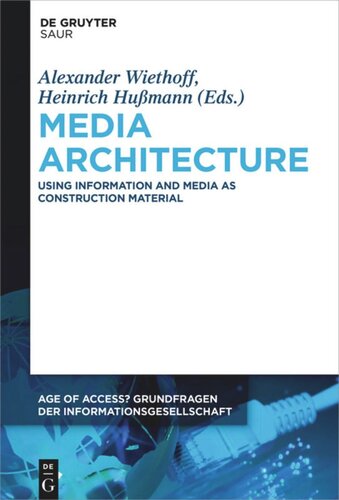

Most ebook files are in PDF format, so you can easily read them using various software such as Foxit Reader or directly on the Google Chrome browser.
Some ebook files are released by publishers in other formats such as .awz, .mobi, .epub, .fb2, etc. You may need to install specific software to read these formats on mobile/PC, such as Calibre.
Please read the tutorial at this link: https://ebookbell.com/faq
We offer FREE conversion to the popular formats you request; however, this may take some time. Therefore, right after payment, please email us, and we will try to provide the service as quickly as possible.
For some exceptional file formats or broken links (if any), please refrain from opening any disputes. Instead, email us first, and we will try to assist within a maximum of 6 hours.
EbookBell Team

5.0
78 reviewsThe augmentation of urban spaces with technology, commonly referred to as Media Architecture, has found increasing interest in the scientific community within the last few years. At the same time architects began to use digital media as a new material apart from concrete, glass or wood to create buildings and urban structures. Simultaneously, Human-Computer Interaction (HCI) researchers began to exploit the interaction opportunities between users and buildings and to bridge the gaps between interface, information medium and architecture. As an example, they extended architectural structures with interactive, light-emitting elements on their outer shell, thereby transforming the surfaces of these structures into giant public screens. At the same time the wide distribution of mobile devices and the coverage of mobile internet allow manifold interaction opportunities between open data and citizens, thereby enabling the internet of things in the public domain. However, the appropriate distribution of information to all citizens is still cumbersome and a mutual dialogue not always successful (i.e. who gets what data and when?). In this book we therefore provide a deeper investigation of Using Information and Media as Construction Material with media architecture as an input and output medium.